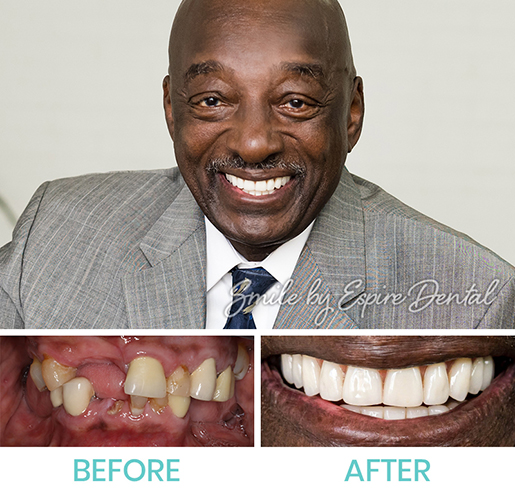
The most common way to replace a missing tooth is with a dental implant, but patients also have a variety of other options to consider.
There are a lot of ways you can lose a tooth — such as injuries, severe tooth decay, or genetic factors that lead to tooth loss. Fortunately, there are also plenty of procedures to replace a missing tooth. Here’s what you need to know.
Why You Need to Replace a Missing Tooth
For a missing tooth in a highly visible location, aesthetic concerns often lead people to swiftly find a replacement. If you lose a tooth in a less visible location near the back of your mouth, however, you might weigh whether or not you need to replace it.
Is replacing a hidden tooth really necessary for your overall dental health? The answer is: yes!
Replacing missing teeth is an important part of any good dental plan, since a missing tooth has the potential to damage your overall dental health. When a missing tooth remains unattended, you can experience a condition known as malocclusion — misalignment of the jaws — which develops in order to help your jaws close naturally around a gap in your teeth.
In addition to malocclusion, you may also experience bone loss in your jaw at the site of your missing tooth. This bone degradation can alter the appearance of your jawline over time.
How Missing Teeth Are Replaced
The most common way to replace a missing tooth is with an implant. The process of getting an implant involves a minimally invasive surgical procedure in which a small titanium screw is attached to the site of your missing tooth. Then, a prosthetic tooth is secured onto the titanium base.
The goal of the titanium screw is to simulate the root of a natural tooth. Your jawbone will eventually grow around the base of the implant, which allows your prosthetic tooth to remain stable and secure. Implants should look and feel natural, and perform all the normal functions of natural teeth.
However, implants aren’t the only type of tooth replacement procedure available. For unique types of tooth loss, there are different solutions. Other ways to replace missing teeth include:
- Dentures. Dentures are a temporary solution to missing teeth, without the strength and stability of an implant. Still, there are plenty of advantages to dentures. If you’re missing several teeth, partial dentures offer an efficient way to simulate the appearance of real teeth. They can also help your natural teeth stay in place.
- Dental Bridge. A dental bridge uses dental bonding to attach multiple prosthetic teeth to your existing teeth. Like dentures, a dental bridge is especially useful for people who have lost multiple teeth in a row.
Even though dental implants are the most common way to replace a missing tooth, your dentist may offer a different approach depending on your unique situation. As soon as you lose a tooth, talk to your dentist about which tooth replacement option is right for you.
Replacing Missing Teeth at Espire
Your first visit to Espire will involve an assessment of your unique dental landscape to determine which type of replacement is best for your teeth. After your initial examination, our dental professionals can provide you with an implant (or another solution) that looks and feels natural.
At Espire, our experienced dentists offer treatment in a comfortable environment. With a success rate above 95%, dental implants provide our clients with a long-lasting solution to missing teeth. If you’ve lost a tooth, schedule an appointment at Espire today. Your smile is too important to wait!


